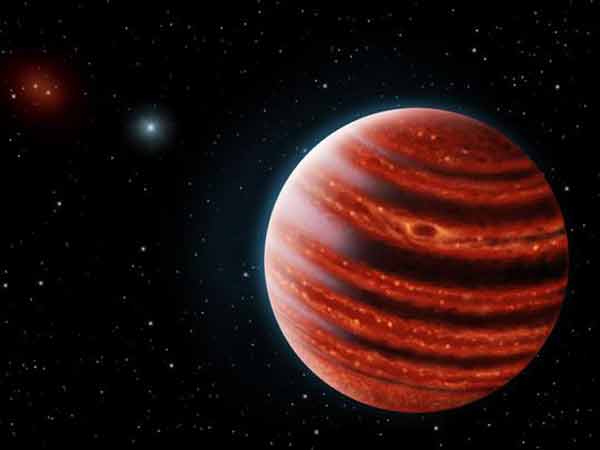
Arizona, US (BBN)-The Gemini Planet Imager imaging instrument perched atop Chile’s Gemini South Telescope has for the first time discovered an exoplanet which is Jupiter-like within a young system. In all likelihood, the exoplanet — 51 Eridani b — may be the lowest-mass one ever directly imaged with a space telescope instrument.
The results were published on Thursday in the journal Science, reports The Hindu.
Besides being the lowest-mass planet ever imaged, it is also far colder than other exoplanets — 650-750 degree Fahrenheit.
Yet, this temperature is more than sufficient to melt lead. It is hotter than Jupiter because it is so young and glows with energy released from its formation.
51 Eridani b also shows the “strongest methane signature ever detected in the atmosphere of an alien planet,” notes a University of Arizona release.
Methane is an important molecule in Jupiter’s atmosphere.
The exoplanet orbits the star 51 Eridani, which is just 20 million years old.
The young age of the star — born 20 million years ago — is what helped in the direct detection of the exoplanet.
“51 Eri is one of the best stars for imaging young planets,” Eric Nielsen, one of the authors of the paper said in a Stanford University release.
Based on available data, B. Macintosh, the lead author of the paper from Stanford University, US, has proposed that the exoplanet weighs far less than those imaged so far.
According to him, 51 Eridani b would weigh twice as much as Jupiter; this far less compared with other explonets that were at least five times heavier than Jupiter.
Unlike in the case of Kepler where exoplanet detection is based on shadow formed when a planet passes in front of a star, the Gemini Planet Imager looks for the planet’s glow.
To detect the 51 Eridani b exoplanet, astronomers blocked the light of the star and spotted the light reflecting off the planet.
The planet orbits the star at a distance which is a little more than the distance between Saturn and the Sun.
Since the light reflected from the planet is what is looked for, it comes as no surprise that the light from the exoplanet was more than 3 million times fainter than its star.
“51 Eri b provides an opportunity to study in detail a planet that is still influenced by its formation initial conditions. With a methane-dominated spectrum, low luminosity and potentially low-entropy start, 51 Eri b is a bridge from wider-orbit, hotter and more massive planets to Jupiter-like scales,” the authors say.
MLB/SK/AD-15Aug15-3:00pm (BST)